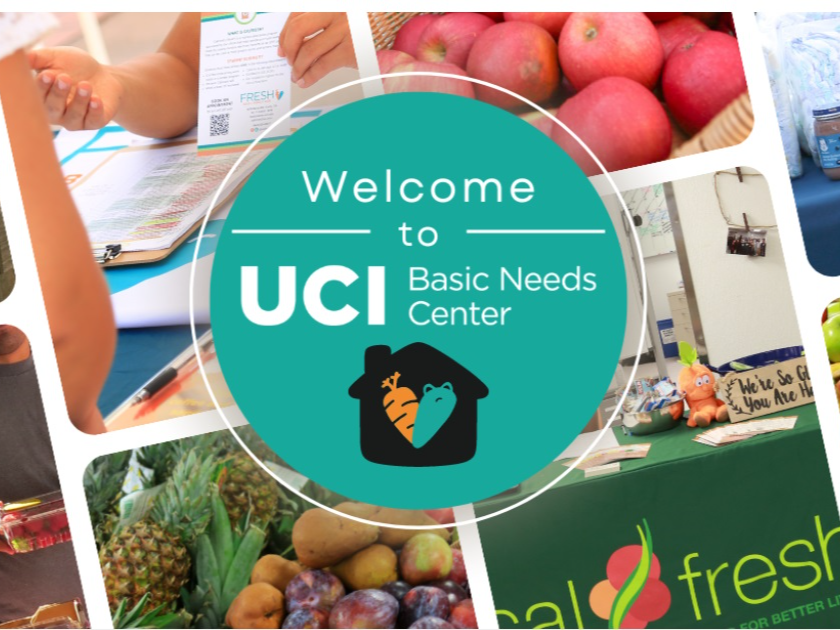Marine Mammal Mania
Conservation Education Game
(p.s. Figma link & Game play video link is provided at the end of this documentation)
Statement
This project aims to build a functioning mobile game for a younger audiences to explore and learn about marine animals and their natural habitats.
The game will consist of multiple levels and playable characters that players will be entertained and educated simultaneously.
Stakeholder
Key Stakeholders
- Players (majority from elementary to middle school student with an emphasis on those in the PMMC programs)
- Main user
- The main group of people that will interact with the final completed project.
- The project should be attractive to this group.
- Pacific Marine Mammal Center (PMMC)
- Main audience
- The success of this project is their main goal, which is the group that is using the completed project in order for the future education use.
- It is important for giving information and confirming the design idea through the process.
- The project should be able to meet most of the requirements that this group is demanding.
Other Stakeholders
- Software Development Team
- The group to design and implement the project.
- The communication between this group and the key stakeholders is the key for the progress of this project.
- Other Animal Related Education Organization
- Organization that would be interesting to this project.
- Federal Trade Commission
- Needs to follow all regulations like COPPA depending on the functionalities of the game
- Professors and TAs
- The software development team should inform the professor and TAs about the progress of the project regularly.

Technical Constraints
- We will be creating a game that is required to run on any Android Tablet.
- We are limited to the capabilities of Android Studio and its respective libraries.
Risk Analysis
General Risks
- The target audience may not like our game
- Risk Likelihood: High
- Severity: High
- Description: The Game is not enjoyable to the children who it is intended for.
- Mitigate: We can mitigate the target audience not liking our game by conducting user testing and interviews with the intended audience to see if they are enjoying the game. This is an iterative process and can be done multiple times until we are sure the target audience is satisfied with the game we deliver them.
- Hard/unable to conduct user testing
- Risk Likelihood: High
- Severity: Medium
- Description: Due to lack of time and the fact that PMMC will be undergoing renovations at the beginning of 2022, there are less chances for actual users to test out our finished product. To tackle this risk, our team will try our best to study our users beforehand and communicate with sponsors thoroughly to meet basic requirements.
- Unable to present a perfect project in the end due to time constraint
- Risk Likelihood: Medium
- Severity: Medium
- Description: The project does not end up fulfilling all of the sponsor's requests.
- Mitigate: We can create a reasonable project plan that will ensure the project is completed and fulfills all requirements. If delays occur during a sprint, we can communicate with other members in order to ensure that the delays can be dealt with accordingly. We can also make sure to communicate the delays to our sponsor to ensure that the most important features can be prioritized and completed.
- Android marketplace not accepting our game in their store
- Risk Likelihood: Low
- Severity: Medium
- Description: We are not allowed to publish on Google Play or are running into problems doing so.
- Mitigate: We can work to resolve the issues that prevent us from publishing on Google Play, such as fixing errors or waiting a certain amount of days for it to be allowed to publish. We can also distribute the game in other ways, such as through a website or other app stores.
- Sponsor/People dropping out of the project
- Risk Likelihood: Low
- Severity: High
- Description: One or more of our members drops out of the course or the sponsor drops out of the project.
- Mitigate: There is very little we can do if the sponsor or our members drop out, besides communicating with our professors. We can try to mitigate the risks of members dropping out by communicating with one another about any problems or issues and resolve them as a group.
- Sponsor asking for large changes near the deadline
- Risk Likelihood: low
- Severity: High
- Description: Due to the nature of requirements and our short time frame, the Sponsor could ask for major changes near the end of our project.
- Mitigate: We can mitigate this by keeping the Sponsor updated with all our decisions and showing them our deliverables and asking them to provide feedback. Over the course of the project we will generate concepts and prototypes that can easily be fixed and needed to minimize the risk of large changes being needed towards the end.
Management Risks
- Miscommunication with our sponsor
- Risk Likelihood: High
- Severity: High
- Description: Communication in online settings more likely causes misunderstanding. Our team will regularly communicate with sponsors, take notes, and always double check with our sponsor to make sure we understand everything right.
- Covid-19 affecting meetings
- Risk Likelihood: Medium
- Severity: Medium
- Description: The current pandemic situation decreases the possibility of physical meeting between team members and sponsors. The alternative for the problem is using virtual meetings, which avoid the distance obstacle. We will try our best to schedule meetings that everyone can attend which can lower misleading communication. We will also communicate regularly with our sponsor in order to keep them updated on the progress of the design and implementation process.
- Lack of experience in large scale projects
- Risk Likelihood: Medium
- Severity: Low
- Description: Large scale projects like this one require a lot of planning and prep work to make sure the project can be completed and does not fall behind schedule. Our class has us complete assignments to ensure we are staying on task and keeping the project progressing.
- Underestimating how long certain tasks will take
- Risk Likelihood: Low
- Severity: High
- Description: By underestimating the work length for each task can cause us to have wrong time estimation on the project. This can cause the delay or failure to finish the project. We should be careful in the early stages when planning the timeline for the project, listing every single task with subtasks might help decrease the underestimation of the length for each task.
- Other classes and responsibilities causing delays in work
- Risk Likelihood: Low
- Severity: Hard
- Description: The conflicts between each class can cause severe delay not only affecting this specific project but also other assignments in the other classes, which can potentially affect academic performance. This is the reason why we all create an individual Gantt chart which lists out scheduled assignments and the time required to complete. The Gantt charts help us to plan our individual schedule for each class so that we can have a clear understanding on how to prevent most of the schedule conflicts between each class and responsibilities.
Technical Risks
- What we choose to code in may not prove to be the best option
- Risk Likelihood: High
- Severity: Medium
- Description: Since none of us is experienced in game development, there is a high chance that our development approach is not the best option. To avoid this, we will research and compare available options and choose the best out of them according to our plan, situation and requirements.
- Lack of knowledge in marine life may aid to poor game mechanics
- Risk Likelihood: Low
- Severity: High
- Description: Despite the fact that we don’t have a whole lot of knowledge about marine life, our sponsor has provided a lot of information about the animals we are designing around. That’s why the likelihood is low, but if we do make decisions that reflect fictional events around an animal, we are failing to deliver the product that was asked of us. It’s very important that we ensure what we design reflects reality, because then it wouldn’t be an educational game.
- Game development frameworks proving to be inadequate
- Risk Likelihood: Medium
- Severity: High
- Description: When it comes to game development, choosing the right frameworks and software to use is crucial for the overall success of the project. With this in mind, it is important for us to select established frameworks and software to lessen the risk of a faulty or bug-riddled program. If we pick a framework that does have those characteristics, it will jeopardize the whole project. That’s why in depth research is needed for this.
- Lack of experience in game development
- Risk Likelihood: Medium
- Severity: Medium
- Description: Lack of experience could lead to a poorly designed project as there are many gray areas around the processes of game development. On the flip side, we do have experience in the language used, and picking up new frameworks isn’t a super long process given there is solid documentation. In addition, we have experience playing video games, so we understand what makes a game good and what makes a game bad.
Software Design
Assumptions
- Our project will be written in Java.
- Our users are familiar with tablet devices and basic game interactions.
- Our team will mainly use free resources available rather than paying for them.
- Our team will communicate with our sponsor at least once a week.
- The project will be tested on an Android tablet before launching.
- The game should be able to function even if the device has no internet connection.
- The game will not display any violent/harmful images as the game’s main purpose is to be educational.
- The game will not take any personal/private information from users.
- PMMC staff members will guide younger users through the game.
- The staff members can view the quiz results.
Functional Requirement
Use Case Diagram

UML Design Diagram

Non-Functional Requirement
Security
- Description
- Marine Mammal Mania shall securely manage the data of the system using standard encryption methods to protect any individual data.
- Priority
- High
- Rationale
- Individual data will have high potential for leaking sensitive information into the public.
- Stability
- High - stable
Accessibility
- Description
- Marine Mammal Mania will be accessible and accommodation for users with minimum technique skill or disabilities through the staff member.
- Priority
- High
- Rationale
- The app must be usable by players and staff members without any concern about being exclusive.
- Stability
- Medium
Portability
- Description
- Marine Mammal Mania shall be able to support as a tablet application focusing Android and support mobile applications on both Android and iOS in the future.
- Priority
- High
- Rationale
- The app must be available as a tablet application to be widely accessible to players and staff members.
- Stability
- High - should be stable
Efficiency/Performance
- Description
- Marine Mammal Mania shall be able to run smoothly on an android tablet using minimal storage and minimal CPU and GPU load.
- Priority
- High
- Rationale
- The app must be able to run on a variety of android tablets.
- Stability
- High
Scalability
- Description
- Marine Mammal Mania shall be able to support scalability as it is possible for more levels to be added in the future.
- Priority
- Low
- Rationale
- The app must be available to support 5 marine mammals and more could be added.
- Stability
- Medium
Reliability
- Description
- Marine Mammal Mania shall be able to reliably run on an android tablet without crashing or losing user data.
- Priority
- High
- Rationale
- The app must be able to run reliably and not lose user data.
- Stability
- High
Usability Goals
- Effectiveness: Users will achieve the goal of learning about marine mammals and their conservation through in-game quizzes and information provided.
- Efficiency: The game’s UI will be simple and do not have too many buttons.
- Learnability: To make it easy for users to learn the software’s system well, our project will adopt user-friendly UI components such as gameplay instructions and item explanations.
- Safety: The game will ensure that users can recover from their mistake, by letting them restart the level without having to go back to the first level when their character runs out of “life”.
- Memorability: The game will generate appropriate menu names and icon images so that users can easily remember how to use our interface.
Functionality Goals
- Content hierarchy serves well to navigate users to achieve their goals.
- The game has intuitive navigation.
- Visual elements are functional enough, with appropriate sound effects and animation.
Satisfaction Goals
- The overall user experience with the game will be pleasant, with the use of appropriate music, animated sprites, flexibility of choosing characters to play, and more.
- The game’s UI will be readable and easy to navigate to increase user satisfaction.
UI Document
Personas
- Bobby
- Age: 12
- Title: Middle school student that is part of PMCC’s program
- Interests:
- Enjoys learning about marine life and aquatic animals.
- Usually enjoys games with action and objectives.
- Favorite marine animal is the dolphin.
- Needs:
- The game needs to keep his attention as he gets disinterested in games if there’s a lot of times where nothing is really happening.
- The game needs to be colorful and have sounds, or else he won’t be interested.
- He wants to be able to play as marine animals.
- Goals:
- As a middle schooler, he just wants to have fun playing a game about the things he enjoys.
- Technology:
- Can use any smart device (i.e. tablet, smartphone).
- Timmy
- Age: 6
- Title: Elementary school student that is part of PMCC’s program
- Interests:
- Enjoys animals and loves learning about the ocean and its wildlife.
- Enjoys collecting stuffed animals of his favorite marine animals.
- Needs:
- The game needs to be simple so Timmy can be able to play with minimal frustrations.
- The learning moments need to be simple enough for Timmy to understand.
- The game needs vibrant colors and sounds to keep his attention.
- Goals:
- Wishes to have fun, even if he fails the quizzes or doesn’t quite understand the educational side of the game.
- Technology:
- Limited ability to use smart devices.
- Michelle
- Age: 35
- Title: Instructor at PMMC
- Interests:
- Pay attention to any animal conservation news and articles.
- Enjoying rescue marine mammals and giving publicly on protecting marine mammals.
- Needs:
- The game needs to be educational. It doesn’t matter how fun the game is if it doesn’t teach the kids anything.
- The game should be able to make educating teenagers and the general public easier.
- The game shouldn’t take too long and make the kids become focused on playing or encouraging them gaming.
- Goals:
- Teach kids about marine life and the dangers that they face due to humans.
- Technology:
- Can use any smart device (i.e. tablet, smartphone).
- Sarah
- Age: 40
- Title: Parent of a student who participated in PMCC’s distance learning program
- Interests:
- Wants her child to have a fun, meaningful experience in online learning.
- Needs:
- The game needs to be educational.
- The game has to be fun for her child so that she will enjoy online learning.
- The game has to be kid friendly; no violence or harmful images should be presented in the game.
- Goals:
- Make sure PMCC’s game is fun, safe, and educational for her child while she is having online learning sessions.
- Technology:
- is familiar with computers, laptops, and smartphones; not experienced in playing games.
Scenarios
- Bobby
- Bobby has been released from school for the day and is at the PMMC. Bobby wants to learn about Blue Whales but does not want to read a book on them. Luckily Bobby remembers that he can learn about Blue Whales on the video game available on tablets at the PMMC. With the video game Bobby can be entertained and learn about marine mammals.
- Timmy
- Timmy was dropped off at PMMC for their marine life program. He is handed an Android tablet to play our game with the guidance of staff. Timmy is able to start up the game all by himself and enjoys the game but keeps failing the first level. A staff member helps Timmy and he’s able to keep playing and beats the first level. Timmy then unfortunately fails the quiz, but the game progresses anyways and Timmy is still able to have fun playing the game. Timmy finishes the game despite failing the quizzes.
- Michelle
- Michelle runs one of the afterschool programs at PMMC. Today the kids learned about marine mammal rescues and now they have some free time. Michelle sees that one kid is playing on his phone while the other kids are looking around and learning more about marine life. She talks to him and tries to encourage him to stop playing with his phone, but he doesn’t want to. So instead she decides to introduce him to the PMMC video game. The kid is interested since it is a game, but is a bit doubtful since it's educational. He manages to finish two levels before the next activity begins. Afterwards, he shows an increased interest in whales and polar bears since he had just finished playing as them and learning about them.
- Sarah
- Sarah’s 9 year old daughter loves dolphins. Because of the pandemic, she has not been able to go to school for a few days. Watching her getting bored at home, Sarah wants her to learn something that she is actually interested in, using an online learning platform. While searching, Sarah finds PMCC’s distance learning program and thinks it’s perfect for her kid. Reading from PMCC’s description that the program will utilize an educational game, Sarah is worried if the game is going to be safe for her 9 year old. She decides to supervise when her daughter plays the game. Her daughter really enjoys playing the game with marine animal characters, and Sarah agrees that the game is educational and fun enough, without any harm. Taking level quizzes throughout the game, Sarah and her daughter learn about marine animals, their rescue and conservation together.
Storyboards

Initial Mockups
Prototyping - Comparative Analysis
Game Page - General
To show each character's status, including air, food, and life condition. (This is an initial version, update and final version could be different. )

Game Page - Introduction of Characters
This game is designed to be educational, in which each marine animal should be introduced to the player, including their habitat, food and breath habit, socialization and life history. (This is an initial version, update and final version could be different. )

Game Page - Alert
Shows player alert when the marine animal does not have enough essential for living, which is not having an average amount of air, food, or life.

Character Action - Animal Catching Food
To ensure the game acknowledge that players gain new food for the characters, which the food condition status should increase.

Character Action - Encounter Pollution / Human Impact
Game should notify the players when characters hit marine debris, such as plastics, derelict fishing gear, and trash.

Character Action - Gaining Air
Each character would require to maintain decent amount of air in order to survive under water.

Wire Frames
Polar Bear
- Only characters in the game requires to interact with ocean, iceberg, and land.
- Iceberg melts based on the timer.
- Polar bear should be able to hop on to any iceberg for breathing and hunting.
(only create polar bear wire frames because all other characters only interact with either land or ocean)






